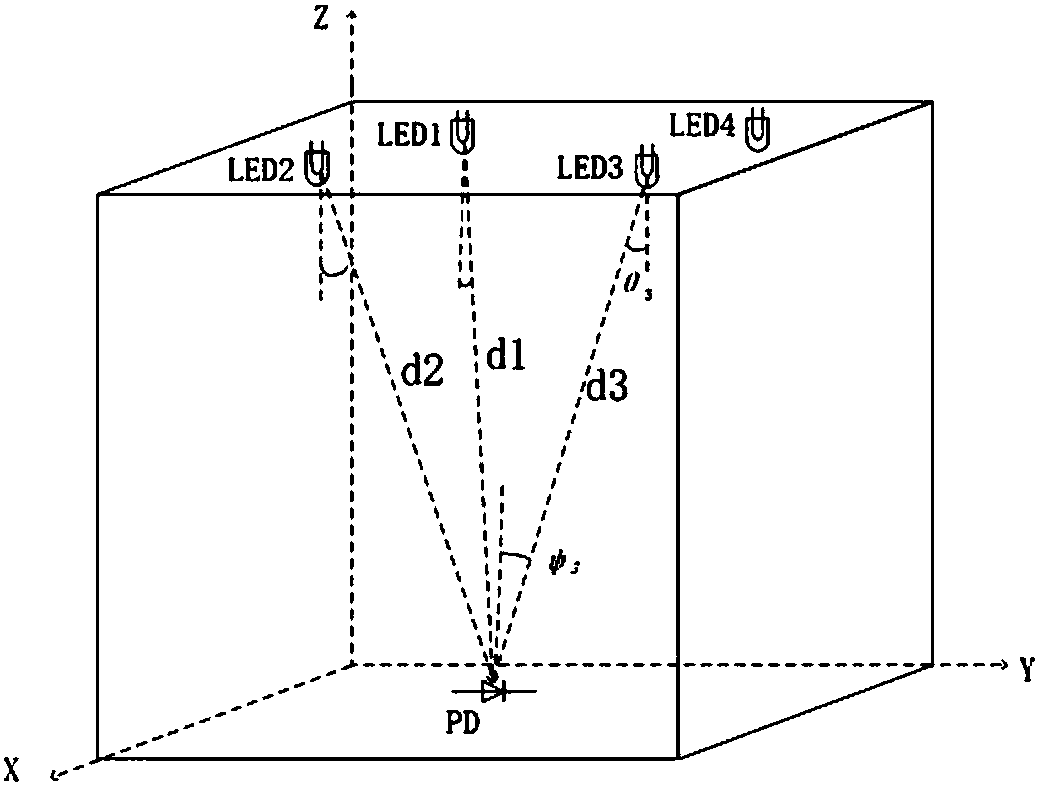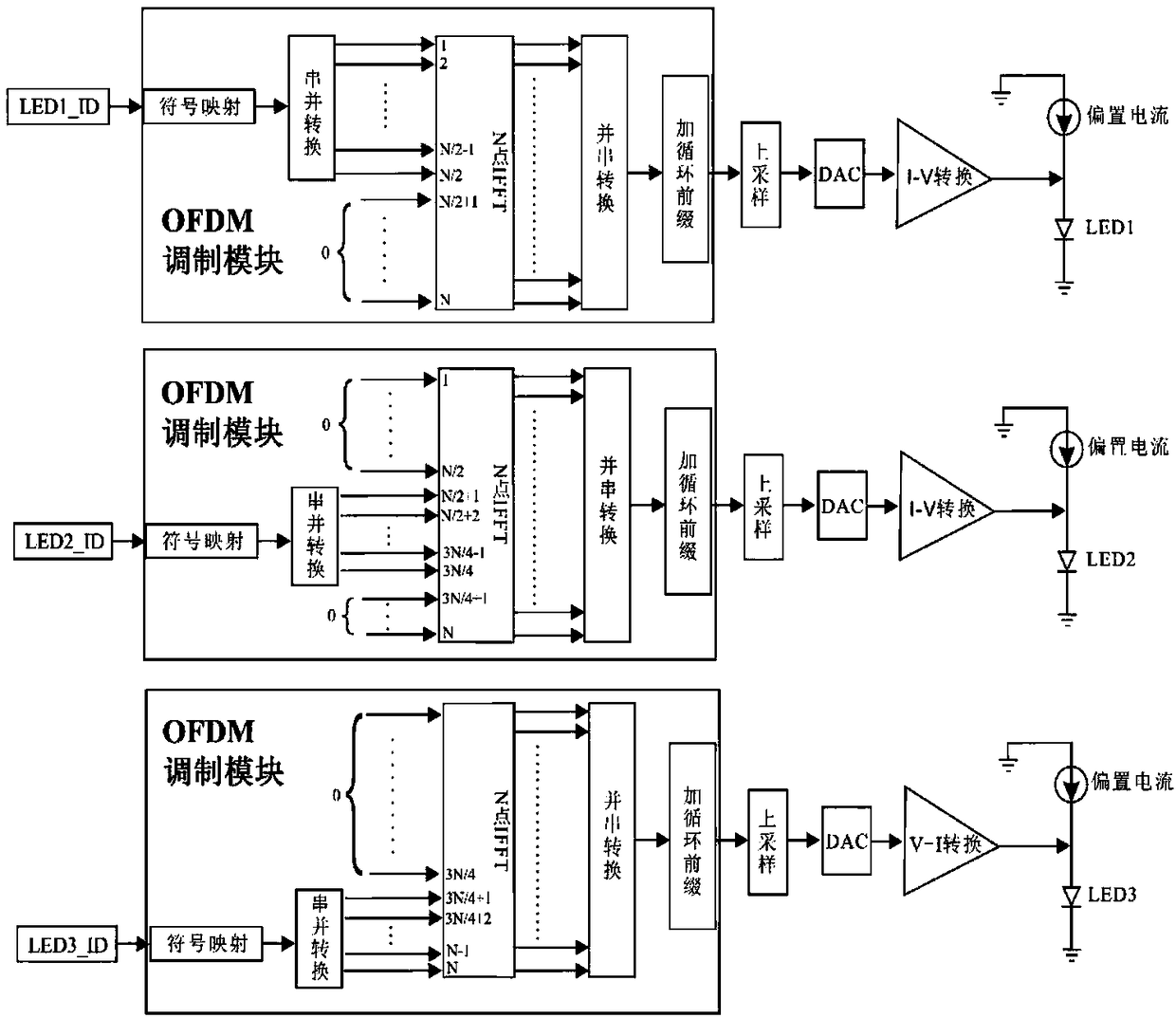OFDMA technology based visible light indoor positioning method
An indoor positioning and visible light technology, applied in the field of visible light indoor positioning based on OFDMA technology, can solve problems such as affecting positioning quality and degrading communication quality, and achieve the effects of high data transmission rate, high signal-to-noise ratio, and good anti-fading performance.
- Summary
- Abstract
- Description
- Claims
- Application Information
AI Technical Summary
Problems solved by technology
Method used
Image
Examples
Embodiment 1
[0044] Such as figure 1 Shown is a schematic diagram of visible light indoor positioning based on OFDMA technology. Install M LED lamps on the ceiling according to the needs of the indoor environment, where M≥3, and every three adjacent LED lamps are a group of positioning units.
[0045] A visible light indoor positioning method based on OFDMA technology, specifically comprising:
[0046] S1. Encode the coordinate information of each LED lamp into the ID code of the corresponding LED lamp, so that each LED lamp has a unique ID code;
[0047] S2. Divide every three LED lamps into one group, and perform OFDM modulation on the ID codes of the three LED lamps in each group through the OFDM modulation module, and the OFDM symbols generated after modulation are converted into analog quantities through a digital-to-analog conversion circuit. Then load it to the LED lamp to emit light signal through the LED drive circuit;
[0048] Such as figure 2 Shown is a flow chart of three LE...
Embodiment 2
[0055] Through MATLAB simulation based on the principle of OFDMA, the ID signals of the three LED lamps are transmitted in the three-part orthogonal sub-channels in the 256-point OFDM modulation system, in which the ID information of LED1 occupies subcarriers 1 to 128, and the remaining unoccupied subcarriers The signal on LED2 is filled with zeros; the ID information of LED2 occupies subcarriers 129-192, and the signals on the remaining unoccupied subcarriers are zero-filled; the ID information of LED3 occupies subcarriers 193-256, and the remaining unoccupied subcarriers The signal above is zero-filled. Due to the orthogonality of the channel, the ID information of the corresponding LED lamp in the mixed signal can be demodulated at the receiving end. The channel uses additive Gaussian white noise as noise interference, uses wavelet filtering to denoise, and establishes an indoor space with a unit of 2m×2m×3m, in which LED lamps are located at the endpoints of the unit. Sin...
PUM
 Login to View More
Login to View More Abstract
Description
Claims
Application Information
 Login to View More
Login to View More - R&D
- Intellectual Property
- Life Sciences
- Materials
- Tech Scout
- Unparalleled Data Quality
- Higher Quality Content
- 60% Fewer Hallucinations
Browse by: Latest US Patents, China's latest patents, Technical Efficacy Thesaurus, Application Domain, Technology Topic, Popular Technical Reports.
© 2025 PatSnap. All rights reserved.Legal|Privacy policy|Modern Slavery Act Transparency Statement|Sitemap|About US| Contact US: help@patsnap.com



